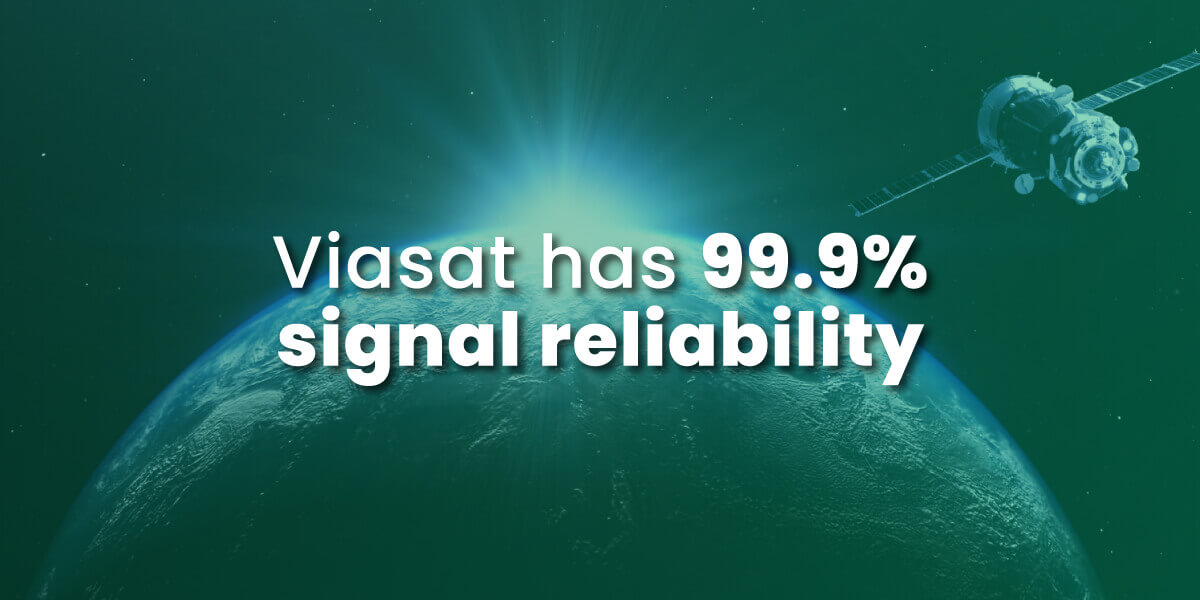Satellite Internet Speed: Myth vs. Reality
Table of Contents
Many years ago, satellite internet suffered from slow speeds and disjointed connections, leaving rural residents frustrated. But thanks to remarkable innovation, those dated myths are now a relic of the past. New, advanced satellites serve targeted beams to dishes below, bringing space-age reliability. Satellite now provides high-speed internet, and satellite internet speeds are increasing every year.
This article dispels the old myths surrounding satellite internet and reveals how new technologies have catapulted performance to unprecedented levels. The new marvels of satellite engineering can deliver quick streaming and smooth browsing. Read on to learn how the reality of satellite internet has caught up with our imagination.
Understanding Internet Speed
Satellite internet works by transmitting data between a satellite in space and a small dish installed at your home or office. The satellite connects to the wider internet backbone on Earth.
Several key factors influence internet speeds, including bandwidth, latency, jitter, and consistency.
- Bandwidth refers to the maximum data transfer rate possible on your connection.
- Latency is the time it takes data to travel between you and the internet server.
- Jitter is variation in latency.
- Consistency reflects the reliability of the connection.

Satellite Internet Speed Myths
Myth 1: Satellite internet is always slower than any wired internet.
Reality: While true in the past, satellite internet speeds now rival DSL and some types of cable internet through improved satellite and networking technologies. Satellite internet today leverages high-bandwidth Ka-band satellites, which are more powerful than the previous Ku-band versions. With greater capabilities, satellite internet now provides 25 Mbps to 100 Mbps speeds for most households and businesses.
Myth 2: Bad weather drastically slows satellite internet performance.
Reality: Minor disruption can occur during heavy rain, snow, or storms due to signal interference. However, modern satellites use spot beam technology to narrowly target broadband signals to household dishes. This minimizes the impact of unfavorable weather. Slowdowns are generally minimal.
Myth 3: Satellite internet service suffers frequent disconnects and lags.
Reality: Historically, latency has been a weakness of satellite internet. Satellite internet today does have some lag, but the delay is so tiny that it is not noticeable in most internet activities. Disconnections are rare with proper installation. As companies like Viasat deploy LEO technology in sustainable ways, latency drops even farther.

Satellite Internet Speed Reality
Thanks to technological innovation, satellite internet speeds and reliability now effectively serve rural areas and outperform DSL networks:
- In real-world speed testing, satellite internet consistently meets advertised speeds of 25 to 100+ Mbps for downloads. Upload speeds range from 3 to 15 Mbps.
- Satellite internet now outperforms DSL, which is often still averaging speeds below broadband speed such as 10 Mbps for download and 1Mbps upload.
- Consistent speeds enable smooth streaming, video calls, remote work, many types of online gaming, and other high-bandwidth activities. As long as users manage their bandwidth wisely, most common internet activities will work very well over satellite internet.
Advantages of Satellite Internet
Globally, satellite internet provides connections where cable and fiber services don’t reach. Benefits include:
- Satellite covers remote rural areas, oceans, deserts, and locations too isolated for wired connectivity. Approximately 3 billion people globally fall into coverage gaps that can only be served by satellite internet.
- Setup is fast, with residential installations completed in a day or less in most cases. High-speed internet with global access provides flexibility to live or work anywhere.
- Satellite internet reliably maintains speeds and connectivity during natural disasters, storms, and power outages when wired internet fails. For small businesses and residential customers, satellite internet can be essential for emergency preparedness.

What to Expect from Satellite Internet
Satellite internet can provide you with an internet connection in places no other technology can reach. You can get a fast, stable internet connection if you choose a satellite internet provider known for higher internet speeds and reliability.
Satellite internet sometimes has higher upfront equipment and installation costs, ranging from $300 to $2000. Deal hunters will be best served by Viasat, which has the most economical equipment prices and also offers the option to rent equipment by the month. With an equipment rental option, your upfront costs will be as low as for a wired internet plan.

Monthly plan fees for satellite internet will run higher than some cable or fiber packages. The mind-boggling technology that sends your satellite signal 88,000 miles does require more investment, and that’s why satellite will cost a little more. However, Viasat offers a wide range of satellite plans that are customizable for your monthly budget.
Though satellite technology has seen remarkable improvements, latency and jitter still remain a little higher compared to most wired connections. This may impact internet applications that require ultra-low latency, such as multiplayer real-time gaming. As satellite internet advances at an ever-faster pace, performance is expected to continue to improve.
Increased Opportunity Through Satellite Internet Access
For rural residents, businesses, and remote workers, satellite internet now delivers a reliable, high-speed connectivity solution. If you live in one of the many places in America where there is no fiber or cable infrastructure, satellite internet can keep you connected to today’s digital world.
Access to remote work, online education, and telemedicine can make a major difference in your life, both now and in the future. Satellite internet has moved far beyond its humble beginnings decades ago. A fast satellite internet connection will allow you to enjoy the benefits of rural living along with the convenience and opportunity of full digital connection.

FAQ: Satellite Internet Speed Myth vs. Reality
Is satellite internet as fast as fiber optics?
No, satellite internet is not as fast as a wired fiber optic connection. But satellite is almost universally available, unlike fiber internet, which has restricted coverage areas. Satellite internet speeds have increased greatly in recent years, and a typical satellite internet connection now achieves 25-100 Mbps speeds to deliver fast, reliable internet.
Do trees and buildings affect satellite internet speed?
Minor obstruction from trees or buildings won’t interfere with signal strength. Satellite dishes have wide fields of view to receive signals from multiple points in the sky. Installers consider obstructions for best dish placement.
How long does satellite internet installation take?
Residential installations normally take 3-6 hours. Businesses may take longer. The satellite dish mounts on the roof or wall and a technician runs cables to the indoor modem. Installs take a day or less in most cases.
Are there data caps on satellite internet?
Satellite internet providers implement high-speed data allowances to keep bandwidth usage fairly distributed. Viasat’s allowances are the most generous, going up to a sizable 500 GB per month, and Viasat also offers Unlimited Standard Data. In addition, a new offering called Viasat Office Hours allows unlimited use of business apps during standard working hours without consuming any of your regular high-speed data.


